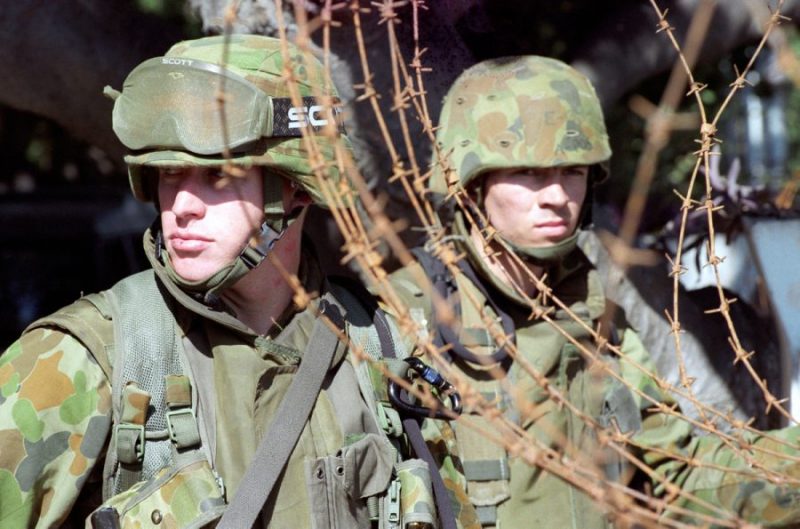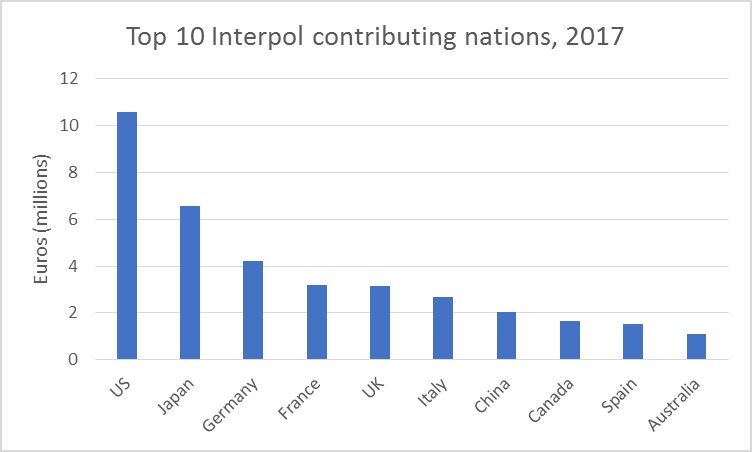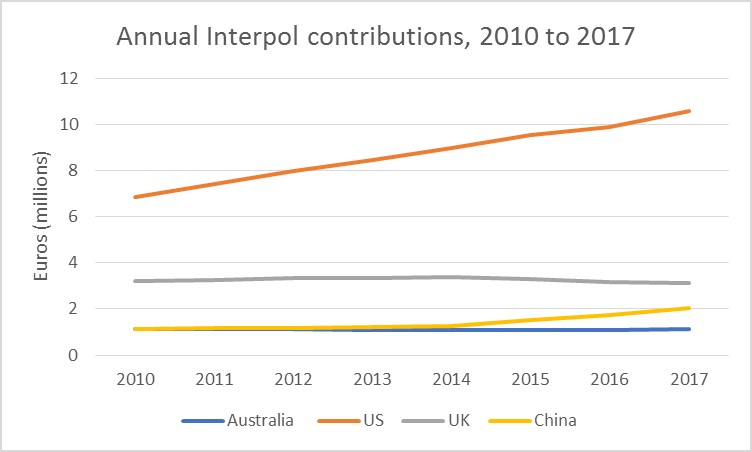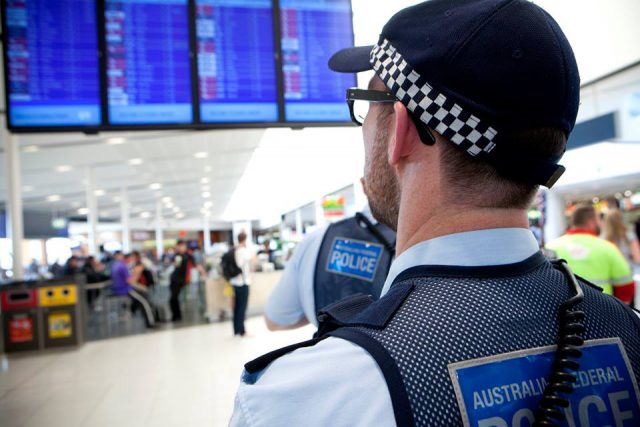
We can be very confident that ASIO, the AFP, state and territory police and other agencies will do everything in their power to stop such an attack. However, history shows that while many terrorist attacks are stopped, some attempts succeed. Afterwards, commissions of inquiry typically find that governmental structures and processes were deficient, responsibilities were not clearly assigned, and information flows had broken down. Those were the lessons, for instance, of the institutional failures that occurred in the lead-up to the 9/11 attacks.
We must not minimise the gravity of this situation by thinking that this threat has little to do with the lives of Australians generally. Were a mass casualty terrorist attack to occur, perhaps on the scale of the bombing of the Jewish community centre in Buenos Aires in July 1994, which killed 85 people, Australia would never be the same again afterwards. Our idea of Australia as being a peaceful and cohesive society would be transformed overnight, for the worst.
The federal government is charged with the defence of the nation, the protection of its sovereignty, and the maintenance of the “peace, order, and good government” of the commonwealth, the latter phrase being contained in the Constitution. If the government fails in any of these first duties of state, no amount of success in other fields will protect it from condemnation, today and in history’s enduring judgment.
While police and security intelligence officers, and other officials, have to grapple at the operational coalface with the complex challenge of counter-terrorism work, it is the government that has the higher and prior responsibility to prevent matters developing to the point where the nation is being riven by polarisation and social fractures, and where there is a risk that hateful beliefs might be acted upon through terroristic violence.
As in war, countering terrorism requires active and involved ministerial leadership, and the wielding of the power of ministerial office to ensure that institutional failures are remedied before tragedy strikes, and not in the aftermath.
In counter-terrorism work, it is vitally important that the architecture of roles and responsibilities is clear, especially in a federation, that governmental structures reflect this clarity, that functions are distributed accordingly, and that there is integration and unity of effort across agencies and jurisdictions. Institutional failures are more likely to occur when the assignment of roles and responsibilities lacks clarity. Reporting lines become tangled. Information flows are impaired. Coherence of effort breaks down.

At the most foundational level, it is not even clear who is the lead federal minister of the government. Under the current Administrative Arrangements Order, the document that sets out the responsibilities of ministerial departments of state, the responsibility for “law enforcement policy and operations” is vested with the Attorney-General, while the responsibility for “national security policy and operations” is vested with the Minister for Home Affairs. So, who is the minister for counter-terrorism?
This blurring of responsibilities, and the associated transfer since May 2022 of the AFP, other law enforcement agencies, and then ASIO from the Home Affairs ministry to the Attorney-General’s, were retrograde steps. They unravelled the clarity and unification of effort that had been put in place by the Turnbull government in December 2017, when the Department of Home Affairs was established in its modern form. Were there to be a major terrorist attack, this blurring of responsibilities, and the consequential weakening of the nation’s counter-terrorism machinery, would be key exhibits in any resultant commission of inquiry.
In the same way that the Minister for Defence would be expected to take the day-to-day lead in matters of war – and we would not have separate ministers for the navy, the army, and the air force pulling in different directions – the Minister for Home Affairs should lead in all matters of domestic security and federal law enforcement. The minister should have “authority over the whole scene”, as Winston Churchill used to say.
Sound arrangements were in place during the period December 2017 to May 2022, when the minister, the department, and ASIO, the AFP, the Australian Criminal Intelligence Commission and AUSTRAC were able to work together as a cohesive team, with the minister having “authority over the whole scene”.
This is not a theoretical claim. It was our lived experience. The relevant machinery of government was integrated. Information flows were seamless. Effort was unified. Australia was safer.
In the absence of a senior minister having such authority, and the information, so that they are able to set strategic directions and to give lawful directions as might be necessary, too much of the burden of accountability in counter-terrorism is being borne by officers who, while being highly diligent and resolutely determined in their work, are not charged with being accountable to the parliament, and the people.
Only an empowered minister who has full command of all of the facts of an evolving situation can probe, question, nudge and – at times – overrule, subject to having the legal authority to do so.
This is the basis for the successful governance of Operation Sovereign Borders. It is how we would fight a war. Why is counter-terrorism being treated differently? It should not be.
Here is what needs to be done, without delay. These measures might strike the reader as being concerned with technical matters of governmental machinery. They are. Getting the machinery and processes of counter-terrorism right keeps us safe, and it is precisely these matters that any future commission of inquiry into a major terrorist attack would have to examine in painstaking detail.
First, the AAO should be amended this afternoon, assigning explicit ministerial responsibility for counter-terrorism to the Minister for Home Affairs. Accompanying instructions should be issued, also this afternoon, to the Director-General of Security and the AFP Commissioner directing them to report to the minister with immediate effect. In due course, the Department of Home Affairs should be reconstituted fully.
Second, the Prime Minister, consulting with first ministers, should declare the existence of a National Terrorist Situation, under the provisions of the National Counter-Terrorism Plan. That plan is the agreed national arrangement for dealing with terrorism, and it should be fully activated, without the government waiting for an attack to succeed. Some might quibble that a “terrorist incident” has not yet occurred. Let them. They can answer before the judgment of history.
The declaration of an NTS would open the way for the commonwealth to assume full strategic leadership of the overall anti-Semitism effort.
The states and territories have vital supporting roles to play in this regard, as they would in any national crisis. However, the severity of the situation has reached a point where the commonwealth now has to lead. Imagine no one bothering to tell Churchill in 1940 that German-speaking parachutists had landed in Sussex, because detective chief superintendent Foyle had the matter in hand!
Had the recent caravan bomb plot succeeded, it would have been an attack on Australia, not an attack on an individual state.
Accordingly, and third, the government should immediately establish a multi-agency, multi-jurisdictional taskforce within the Centre for Counter-Terrorism Co-ordination in the Department of Home Affairs. This should include state and territory officials. The taskforce should be led by the commonwealth Counter-Terrorism Co-ordinator within Home Affairs. The office of Co-ordinator was established in the wake of the Martin Place siege of December 2014, and the subsequent review that was undertaken of Australia’s counter-terrorism machinery.
The taskforce should be built around these three missions: “prevent and protect” (led by Home Affairs); “intelligence” (led by ASIO, working with the AFP, ACIC, AUSTRAC, and other intelligence agencies); and “disruption” (led by the AFP, working with ASIO and state and territory police). This model would mirror the successful Operation Sovereign Borders model that has been in place since late 2013, with a key additional element being the integration of state and territory police, who would retain primacy for the investigation of offending that was related to state and territory laws, under the umbrella of the disruption mission.
The “battle rhythm” of the taskforce should be driven by the provision by the co-ordinator of a daily situation report to the minister, which would provide him with the latest information regarding the threat picture and the operational situation. Nothing more focuses the mind of officers than the need to work to the steady beat of ministerial oversight. This is what happens in war, and in other domestic security crises such as dealing with illegal boat arrivals. It should drive action here too. The report should be suitably classified and constructed such that those few with a comprehensive need to know everything would be able to be fully informed, while those with a lesser need to know would be informed of only those matters that fell within their responsibility. On advice, but in the end exercising his own judgment, the minister should decide what should be said publicly, and when – always balancing the obligation to inform and reassure the public with the imperative to protect operations.
Fourth, national cabinet should agree to the establishment of a national crisis committee of relevant state and territory ministers, to be led by the Minister for Home Affairs. This committee should meet weekly, or more frequently as might be necessary. It would provide a regular opportunity for the co-ordinator and others to brief ministers, and to act as required on any collective decisions that they might take. National cabinet should be primed to meet urgently, as circumstances require it.
Fifth, the co-ordinator should develop a strategy for a national community engagement campaign, in consultation with commonwealth departments and agencies, the first secretaries of the states and territories, the Executive Council of Australian Jewry, and others with particular expertise in the field. Special Anti-Semitism Envoy Jillian Segal should be appointed to be the principal strategic adviser to the co-ordinator and the taskforce in this and all other regards, while retaining her direct reporting line to the Prime Minister and the Home Affairs Minister. She should be given special intelligence and other briefings so she can better perform her functions.
Drawing on the best practice in countering violent extremism, and combatinganti-Semitism, including by way of better Holocaust education, the aim of the campaign would be to counter the very particular and pernicious narratives and ideologies that underpin and sustain anti-Jewish hatred.
Success in this regard will not be achieved by generalised anti-racism and anti-discrimination efforts, and well-meaning pleas for the maintenance of social cohesion, as important as these are. Anti-Semitism has to be countered specifically at the level of narrative and ideology, having regard to the particulars of this ancient hatred. Such a campaign should expose and challenge anti-Jewish tropes, memes, conspiracy narratives, signifiers, and so on. It would have to be mounted across a wide array of social media platforms, and it would ideally involve prominent Australians, including faith leaders, calling out this hatred, and standing with Jewish Australians.
Sixth, the taskforce should work with technology companies and other data providers to generate a better online “dragnet” of anti-Semitic content, built on more powerful, lawful AI-assisted searches for such material, to address the data problems that were recently identified by Mike Kelly in these pages.
A better “dragnet” would generate more leads for intelligence and investigative work, support takedown efforts by the eSafety Commissioner, and assist in the shaping and targeting of the community engagement campaign.
Seventh, the co-ordinator, working in conjunction with the commonwealth Department of Education and the vice-chancellors of universities, should prepare a plan for the minister’s consideration on making our universities safe for Jewish staff and students. Some universities have become hotbeds of hatred. This should not be tolerated. Perpetrators should be dealt with decisively. Sit-ins and encampments should be shut down. This is not an issue of free speech. It is intimidation that has no place in civil discourse.
Eighth, the minister should convene an urgent meeting of the Five Country Ministerial grouping, which brings together the security ministers of Australia, Canada, New Zealand, Britain and the US. This forum has worked very effectively to crack tough domestic security and public safety issues, doing so on the basis of the very highly classified intelligence that is shared among the Five Eyes partners. The Five Country Ministerial group should focus especially on the foreign state and other actors who are almost certainly operating in the shadows to seed and amplify anti-Jewish hatred. Special attention should be paid to Iran, which has a record of sponsoring attacks against Jewish people and places around the world. The FBI and MI5 warned of the threat of Iranian-backed terrorism in the immediate wake of the October 7 attack on Israel.
Ninth, the minister should reassure himself that effective plans are in place to deal with mass casualty bombing attacks, active shooter contingencies, siege/hostage recovery situations, and car-ramming attacks. With the Minister for Defence, he should satisfy himself that the call-out arrangements under Part IIIAAA of the Defence Act are in order, and that the ADF’s Tactical Assault Groups can be quickly deployed.
He should also instruct the co-ordinator to ensure that the guidance for the protection of crowded places, schools and places of worship is current, and has been promulgated effectively to the Jewish community, and to the owners and controllers of relevant physical places. Similarly, access to dangerous chemicals and explosives should be reviewed and tightened as required, and preparations made for the lawful deployment of counter-drone capabilities at certain locations, to defend against drone-mounted attacks.
Finally, the minister should direct Home Affairs to expedite the cancellation on character grounds of the visas of any non-citizens who espouse extremist anti-Semitic viewpoints. A new ministerial direction to decision-makers should be promulgated to ensure that consistently decisive decisions are being taken in this regard.
These measures have a single theme. We know, from the findings of commissions of inquiry, terrorist attacks are more likely to occur where there has been a failure of central co-ordination and direction, a fragmentation of effort, and a breakdown in information flows.
What is suggested here could be set in motion this afternoon. Doing so would not reflect any criticism of officials, and certainly not of the operational teams who are doing their job. However, they do not bear the onerous burden of being responsible for “the whole scene”. That charge falls to the government, which also needs to do its job.














In the next six months there is a greater than 50 per cent chance of a terrorist attack being planned and possibly carried out in Australia. The Director-General of Security told us so on August 5, 2024, when the terrorist threat level was raised to “probable”. The Jewish Australian community has every right to be gravely concerned that Jewish people and places, such as synagogues, might be the targets of such an attack. That this is even a possibility should shock all Australians.